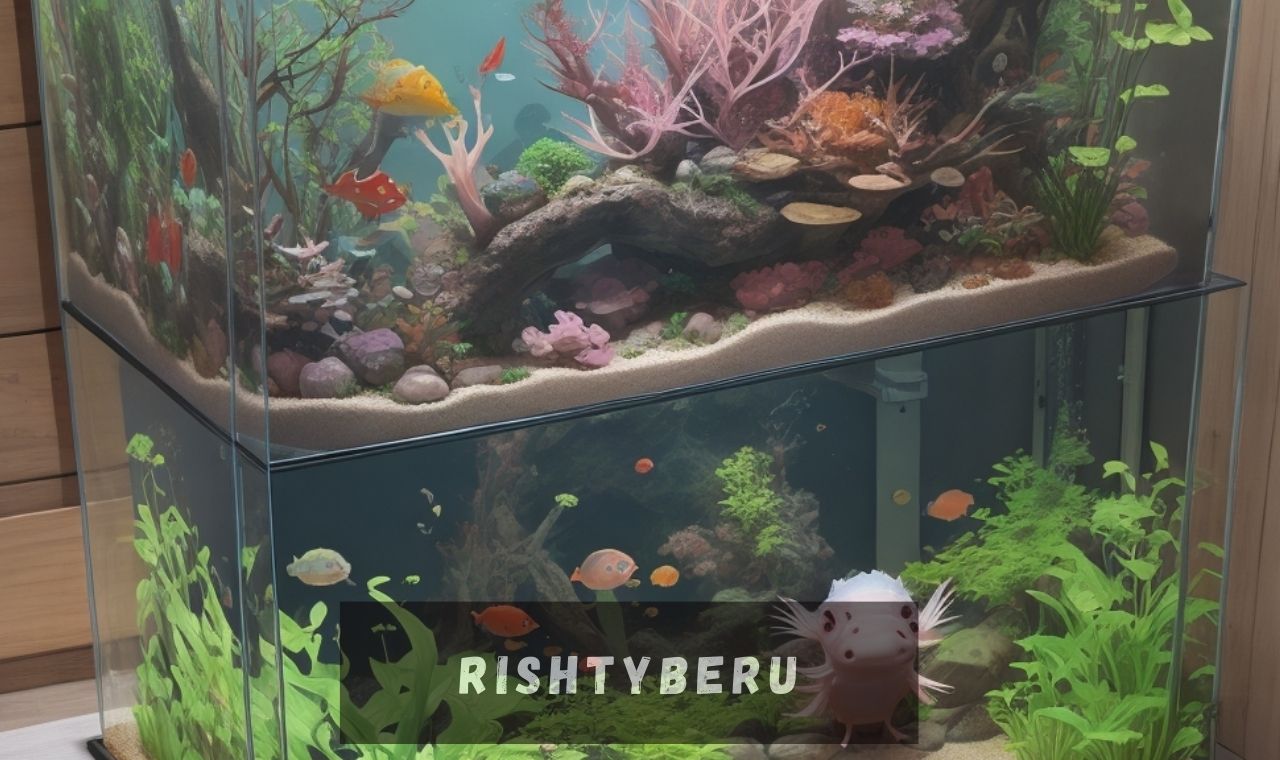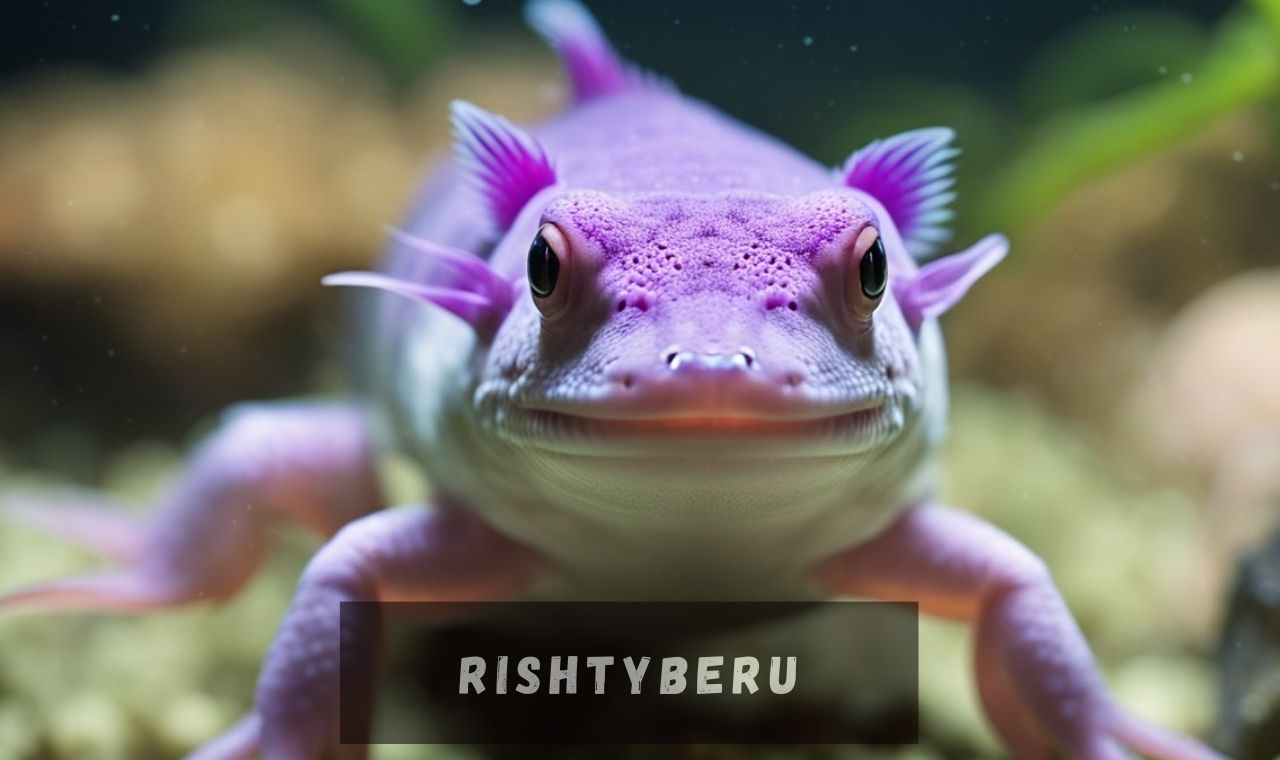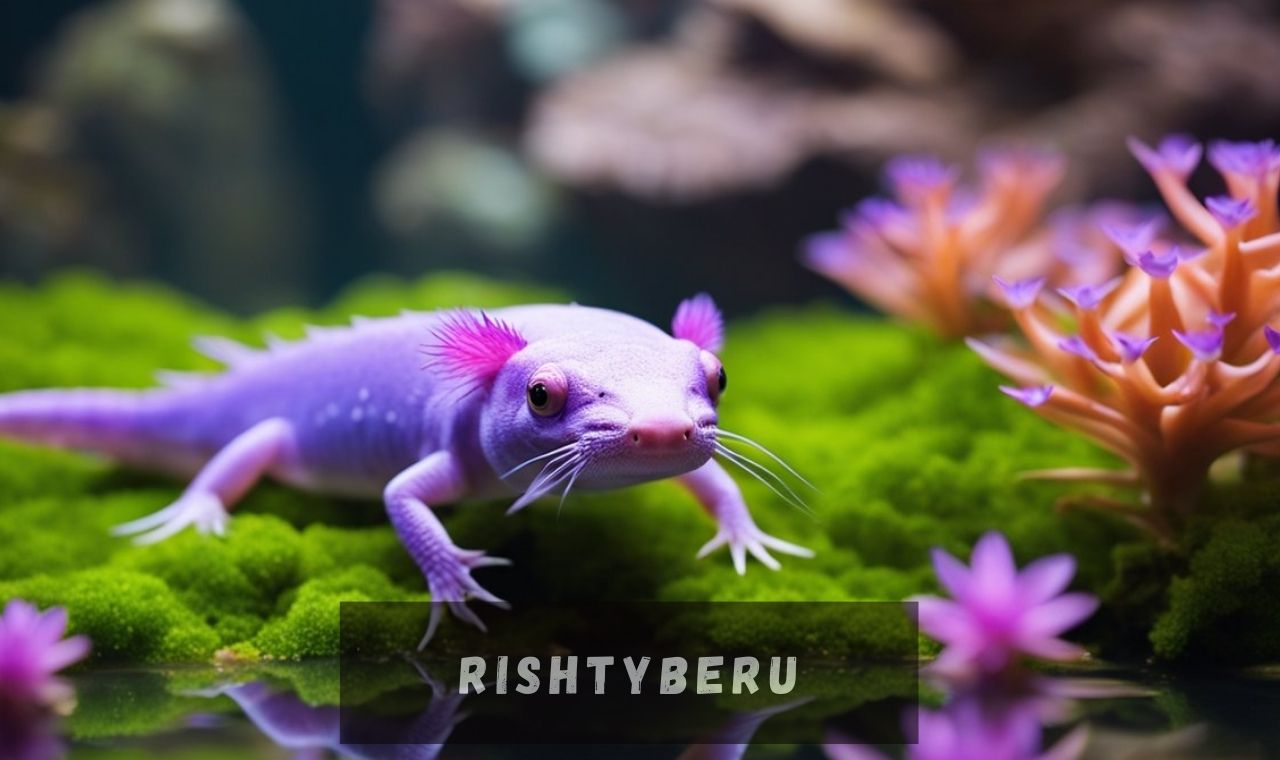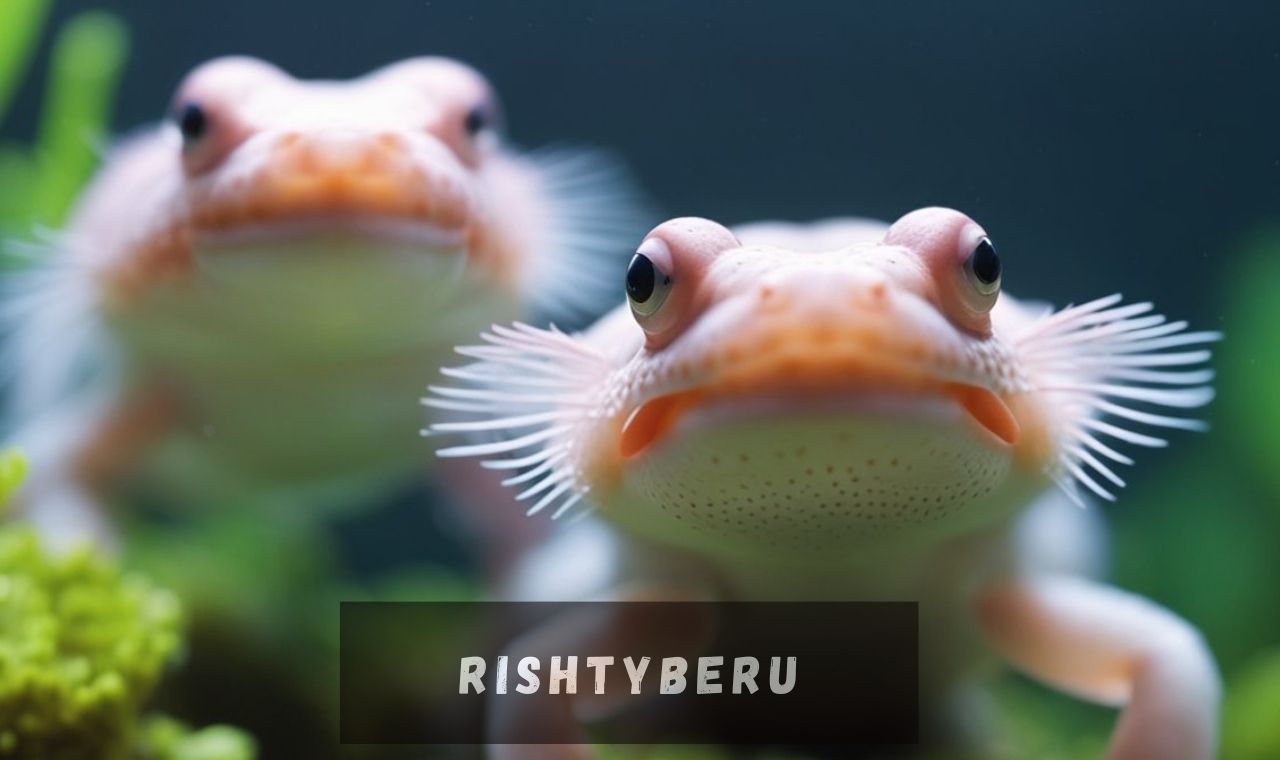Embarking on the journey of axolotl ownership entails more than mere acquisition; it’s about delving into the intricacies of replicating their natural environment within a tank. Crafting a haven for these captivating creatures necessitates a meticulous approach, echoing the tranquility and balance of their native ecosystems. This invaluable guide serves as a cornerstone resource, catering to both novice and seasoned axolotl enthusiasts, dedicated to enhancing the lives of these enigmatic amphibians through enlightened habitat creation.
Understanding the Axolotl’s Native Environment
To create an optimal tank setup for axolotls, one must first grasp the fundamentals of their natural habitat. These unique amphibians hail from the freshwater lakes and canals of Mexico, particularly Lake Xochimilco. Here, they thrive amidst cool, mountain waters abundant in vegetation, and soft, muddy substrates. Replicating these conditions in captivity involves comprehending key environmental parameters:
- Maintain stable, cool water temperatures ranging between 60°F to 64°F (15°C to 18°C).
- Employ a low-flow filtration system to mimic the calm waters of their habitat.
- Provide a dimly lit environment to reflect their aversion to direct sunlight.
- Offer plenty of hiding spots amidst plants and other forms of cover.
- Utilize a soft, fine substrate on the tank bottom to facilitate foraging and resting.
By closely mirroring these conditions, hobbyists can offer their aquatic companions a semblance of their native Mexican lakes, thereby ensuring their well-being and longevity.
Essential Tank Requirements for Axolotls
Creating an ideal environment for axolotls is paramount for their health and vitality. This entails more than just filling a tank with water; it involves meeting specific requirements tailored to their unique biology. Here are the key elements to consider:
Choosing the Right Tank Size:
Space is crucial in the aquatic realm of axolotls. For a single axolotl, a 20-gallon tank is the absolute minimum to allow ample room for swimming and growth. However, if multiple axolotls are introduced, increasing the tank size is imperative. A rule of thumb is to add an additional 10 gallons for each new axolotl to prevent overcrowding and maintain a stable environment.
Types of Filtration Systems:
- Mechanical Filters: Essential for removing physical waste and debris from the tank.
- Biological Filters: Crucial for breaking down toxic substances into less harmful compounds.
- Chemical Filters: Optional, but can help remove odors and discoloration.
It’s vital to select a filtration system suitable for the tank size without producing excessive water currents, as axolotls prefer calmer waters.
Water Temperature and Quality:
Mirroring the cool waters of their natural habitat, axolotls thrive in temperatures ranging from 60-64°F (15-18°C). Regular monitoring of water temperature and quality, including pH levels, ammonia, nitrites, and nitrates, is essential. Weekly partial water changes are recommended to maintain a balanced environment.
Remember, the well-being of your axolotl hinges on the quality of its habitat. Properly setting up a tank, considering all axolotl requirements, is the initial step toward ensuring a fulfilling and healthy amphibian life.
Setting Up Your Axolotl Tank: A Step-by-Step Guide

Embarking on the adventure of setting up an ideal habitat for axolotls is a captivating endeavor, brimming with precise steps tailored to accommodate these extraordinary amphibians. Let’s delve into the meticulous process of creating the perfect axolotl tank setup, ensuring the environment you craft is optimal for your newest aquatic companion.
Crafting Your Axolotl Oasis: A Step-by-Step Guide
Step 1: Selecting the Tank – Kickstart your journey by choosing a tank that offers generous space for your axolotl to thrive and flourish; a minimum of 20 gallons is recommended for one axolotl. Opt for a sturdy glass aquarium for its durability and easy maintenance.
Step 2: Strategic Placement – Position the tank away from direct sunlight to prevent algae buildup and fluctuations in temperature, which can cause stress to your axolotls.
Step 3: Implementing the Filtration System – Integrate a filtration system capable of handling your axolotl’s bioload while maintaining minimal water movement, as axolotls prefer still water. Combining sponge filters with a gentle external filter is often effective.
Pro Tip: Always rinse new filters before installation to eliminate any potential dust or residues that could harm your axolotl.
Step 4: Substrate and Décor – Enhance your tank with a fine sand substrate, safe for axolotls and preventing accidental ingestion. Incorporate decorations like caves or plants for hiding spots, ensuring they have smooth edges to avoid injury.
Additional Considerations:
- Use dechlorinated or specially treated water suitable for axolotls.
- Place the water heater carefully to maintain a temperature between 60-64°F (15-18°C), crucial for your axolotl’s well-being.
Step 5: Water Conditioning – Treat the water with a conditioner to remove chlorine, chloramines, and other harmful chemicals. Maintaining a pH level around 7.4-7.6 is essential for axolotl tanks.
Step 6: Cycling the Tank – Prior to introducing your axolotl, cycle the tank to establish a biological filter that converts harmful substances into less toxic ones. While this process may take a few weeks, it is vital for your pet’s long-term health.
Creating a Haven for Your Axolotl: Decorating Your Tank
In the realm of axolotl tank setup, decoration serves a dual purpose, enhancing aesthetics while providing vital elements for your pet’s well-being. Thoughtfully arranging aquatic plants, rocks, and driftwood is crucial for simulating a naturalistic environment reminiscent of their native habitat in Mexico.
Aquascaping Essentials:
- Opt for plants and features without sharp edges to prevent injury to your axolotl’s delicate skin.
- Choose safe plants like Anubias, Java Fern, and Hornwort that thrive in cooler water temperatures.
- Consider incorporating fine sand substrate for easier maintenance and reduced risk of impaction.
In Summary,
Designing your tank with your axolotl’s safety and comfort in mind is essential for fostering a thriving underwater ecosystem. With careful consideration of aquascaping, substrate selection, and decoration, your axolotl tank setup will not only be visually stunning but also provide a sanctuary for your aquatic companion.
Illuminating the Depths: Lighting and Cover Essentials for Axolotl Tanks
When configuring your axolotl tank setup, striking the right balance with lighting and cover is paramount for maintaining your pet’s health and preserving the beauty of your aquascape.
Optimal Lighting Practices:
- Choose subdued LED lighting to mimic the dimly lit conditions of their natural habitat.
- Establish a consistent light-dark cycle to emulate natural day and night patterns, promoting your axolotl’s well-being.
Selecting the Ideal Tank Lid:
- Ensure the tank lid provides security to prevent your axolotl from jumping out and safeguards against foreign objects entering the tank.
- Opt for a lid that allows adequate airflow and controlled light penetration, such as mesh or specially designed aquarium lids.
Remember, every aspect of your axolotl tank setup plays a crucial role in maintaining a thriving environment for your aquatic friend. By following these guidelines, you can create a captivating and nurturing space that mirrors the beauty of their natural habitat.
Preparing Your Axolotl’s Home: A Humanized Guide
Embarking on the journey of setting up a home for your axolotl requires careful attention to detail and a deep understanding of their needs. Before welcoming your new aquatic friend, it’s imperative to cycle the tank thoroughly. Think of this as laying the groundwork for a safe and healthy environment akin to preparing a cozy home before moving in. Here’s a step-by-step approach, humanized for clarity:
Step 1: Building the Foundation Just as you’d arrange furniture and décor in a new space, start by setting up the tank with substrate, filter, and water. This forms the foundation for your axolotl’s habitat.
Step 2: Initiating the Cycle Imagine introducing plants and flowers to kickstart a fresh atmosphere in your home. Similarly, add a source of ammonia to the tank to initiate the cycling process. This prompts the growth of beneficial bacteria essential for maintaining water quality.
Step 3: Monitoring Progress Keep a close eye on your home’s atmosphere, adjusting heating or ventilation as needed. Likewise, monitor water parameters regularly, measuring levels of ammonia, nitrite, and nitrate. This helps ensure a balanced environment for your axolotl.
Step 4: Achieving Stability Just as you’d wait for settling in before feeling truly at home, nurture the tank’s cycle until ammonia and nitrite levels reach zero, with manageable levels of nitrates. This indicates a successfully established environment for your axolotl.
During this process, maintaining a detailed log of water parameters is akin to keeping a journal of your home’s condition, aiding in tracking progress and making necessary adjustments.
Ensuring a Healthy Habitat: Water Quality and Maintenance
Once your axolotl settles into their new home, maintaining water quality becomes paramount. This involves regular cleaning routines and vigilant monitoring, much like maintaining a tidy and healthy living space for yourself:
Step 1: Regular Cleaning Just as you’d tidy up your living space weekly, conduct partial water changes to reduce nitrate levels, clean tank surfaces to remove algae buildup, and attend to filter maintenance promptly.
Step 2: Monitoring Water Parameters Imagine checking your home’s air quality or thermostat regularly. Similarly, use water testing kits to monitor pH, ammonia, nitrite, and nitrate levels, ensuring they remain within the optimal range for your axolotl.
Step 3: Feeding and Care Finally, ensuring proper nutrition for your axolotl is akin to maintaining a balanced diet for yourself. Offer a variety of live prey and specially formulated pellets, adhere to a feeding schedule, and observe your pet’s appetite closely to promote their health and well-being.
By following these humanized guidelines, you’re not just creating a habitat for your axolotl; you’re crafting a nurturing environment where they can thrive and flourish, much like tending to your own well-being in your living space.
Perfect Habitat for Axolotls: A Guide to Success
Delving into the realm of setting up a tank for axolotls can evoke excitement, yet it also presents the potential for common errors. Learning from the experiences of others is paramount to sidestepping pitfalls that could jeopardize the well-being of these captivating creatures. This guide aims to offer a roadmap for a successful axolotl tank setup, highlighting crucial mistakes to avoid and providing proactive advice.
- Opt for the Right Filter: While filtration is indispensable, a filter with excessive strength can induce stress in axolotls. Choose a filter with adjustable flow or modify the output to suit your pets’ needs.
- Control Light Exposure: Though bright lighting may be visually appealing, it can agitate axolotls. Employ dim, indirect lighting and incorporate shaded areas to replicate their natural habitat’s murky ambiance.
- Select Suitable Substrate: Gravel poses ingestion and impaction risks, so opt for fine sand or maintain a bare-bottom tank for safety. If using larger stones, ensure they’re too large to be swallowed.
- Ensure Proper Cycling: Rushing to introduce axolotls to an uncycled tank invites harmful ammonia spikes. Fully cycle your tank beforehand to establish a stable nitrogen cycle.
- Monitor Feeding Habits: Overfeeding can lead to axolotls becoming overweight. Regularly assess their condition and adjust food portions and frequency accordingly.
“Crafting an optimal environment for axolotls involves not just doing things right but also steering clear of common pitfalls. Avoiding these mistakes is a cornerstone to fostering the thriving life of your aquatic companion.”
By adhering to the guidelines outlined in this axolotl tank setup tutorial and preemptively addressing these typical errors, you pave the path for a flourishing axolotl habitat. For inquiries, seek guidance from experienced owners or knowledgeable aquarists well-versed in axolotl care nuances.
In Conclusion
As we conclude this comprehensive axolotl tank setup guide, let’s encapsulate the essential points discussed. Establishing a nurturing environment for axolotls demands meticulous planning, patience, and a dedication to recreating conditions mirroring their natural ecosystem. Each step, from comprehending their natural habitat to upholding water quality and tank health, is pivotal in ensuring the longevity and well-being of these remarkable creatures. This summary serves as a quick reference for both prospective and current axolotl caretakers as they execute the tasks delineated in this guide.
Recap of Axolotl Tank Setup Steps
To reinforce the key components of an axolotl tank setup, consider the following: Begin by selecting an appropriate tank size, with a minimum of 20 gallons for a single axolotl. A robust filtration system is indispensable for maintaining water clarity and quality without generating excessive currents. Maintain cool water temperatures, ideally between 60-64°F (16-18°C), and routinely assess water parameters to uphold a balanced environment. Incorporate gentle lighting and a secure lid. Decorate with safe plants and suitable substrates, and ensure proper tank cycling before introducing your axolotl. By diligently adhering to these axolotl tank setup tips, you can establish an ideal habitat conducive to your pet’s health.
Additional Resources for Axolotl Enthusiasts
For continuous learning and community support, a plethora of resources cater to axolotl enthusiasts. From dedicated websites focusing on axolotl care to insightful forums facilitating connections with seasoned axolotl keepers, a wealth of knowledge awaits exploration. Investing in a comprehensive axolotl care guidebook can also furnish in-depth insights and firsthand experiences to navigate the intricacies of axolotl care. As you deepen your understanding and broaden your expertise, sharing experiences contributes to the growth and flourishing of the axolotl community.
FAQ
- What tank size is optimal for axolotls?
Axolotls thrive in tanks offering ample space for movement and growth. A minimum of a 20-gallon tank is recommended for a single axolotl, with larger tanks preferable, especially for housing multiple axolotls.
- Can any substrate be used in an axolotl tank?
Selecting a fine-grained substrate such as sand, or even opting for a bare-bottom tank, is essential, as axolotls may ingest small pebbles or gravel, potentially leading to impaction and health issues.
- What water temperature is suitable for an axolotl tank?
Axolotls prefer cooler water temperatures, typically ranging between 60°F and 68°F (16°C and 20°C). Avoid temperatures exceeding 75°F (24°C), as they can induce stress and health problems.
- How frequently should water be changed in an axolotl tank?
Regular partial water changes, usually around 20% once a week, are recommended to maintain water quality. However, this frequency can vary based on tank conditions and filtration efficiency.
- What is the nitrogen cycle, and why is it relevant to an axolotl tank?
The nitrogen cycle involves establishing beneficial bacteria in the tank that convert harmful ammonia into nitrites and then into less harmful nitrates. This process is crucial for creating a stable environment before introducing axolotls to prevent toxic buildup and ensure their well-being.
- Are live plants safe for axolotls?
Yes, live plants can be safe and beneficial for axolotls, offering cover and aiding in maintaining water quality. Opt for plants suited to the cool water temperatures preferred by axolotls, such as Java fern and Anubias.
- What type of filtration is best for an axolotl tank?
A canister or sponge filter is recommended for axolotl tanks, providing efficient filtration without generating strong water currents that may stress the axolotls.
- Why is lighting important in an axolotl tank, and how should it be set up?
Though axolotls don’t require special lighting for metabolic processes, ambient room light or a dim aquarium light can help simulate a natural day-night cycle. Avoid bright lights, as axolotls have sensitive eyes.
- What should I feed my axolotl?
Axolotls are carnivorous and can consume various live or frozen foods like bloodworms, earthworms, brine shrimp, and specially formulated pellets. Adjust feeding according to the axolotl’s size and age to ensure food items are of appropriate size.
- How can I safely introduce my axolotl to its new tank?
After properly cycling the tank and confirming safe water parameters, acclimate your axolotl to the tank’s temperature gradually. This is typically achieved by placing the axolotl, still in its transport bag, into the tank to allow for temperature equalization before releasing it.
With careful attention to detail and proactive measures to prevent common mistakes, you can create an optimal environment for your axolotl, fostering its health and well-being in its new aquatic home.



